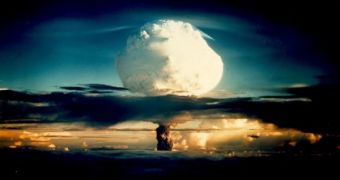The concept of nuclear fusion is something that scientists dream about ever since the mid 1940s, after the fission reaction was first obtained, and the first atom bomb was created. Since then, nuclear energy became a part of our daily lives, with plants being built all across the globe, from Korea to India, the US, China, and Russia. Smaller countries, such as Romania and Bulgaria, also possess nuclear energy, providing electricity to a large percentage of their national grids.
But regular nuclear power plants require tremendous amounts of water to operate, as well as scarce uranium, which has to go extensive "pre-fission" processes, in order to be used. They also pose the risk of leaking radioactive materials, which can contaminate the environment for decades, and subject the population on a range of several hundred miles of the plant to radioactivity. Such was the case with the melting of the nuclear reactors at Three Mile Island, in the US (1979), and Chernobyl, in Northern Ukraine (1986).
Nuclear fusion offers the promise of unlimited amounts of free, clean energy. The California-based Lawrence Livermore Laboratory (LLNL) and the United Kingdom Atomic Energy Authority (UKAEA), through its Mega Amp Spherical Tokamak (MAST), based at Oxford, are the spearheads of current development in this direction.
In its National Ignition Facility (NIF), LLNL will have a laser capable of heating plasma to the absurdly-high temperatures needed for nuclear fusion. The completion of the device is scheduled for 2009, whereas the first test will begin in 2010. Researchers at the lab are confident that, by 2011, they could obtain sustainable and entirely controllable fusion. The year of 2020 was set as a marker for the construction of the first commercial power plant, to employ the new technology.
If their endeavors are successful, then the world could see a major transformation, as far as energy production goes. Having a reliable and perfectly safe source of power will virtually eliminate the need for fossil-fuel power plants, and even wind and solar farms will become obsolete. In order for this to happen, governments worldwide will have to make a huge financial effort, to install these energy-producing plants across their territories.

 14 DAY TRIAL //
14 DAY TRIAL //